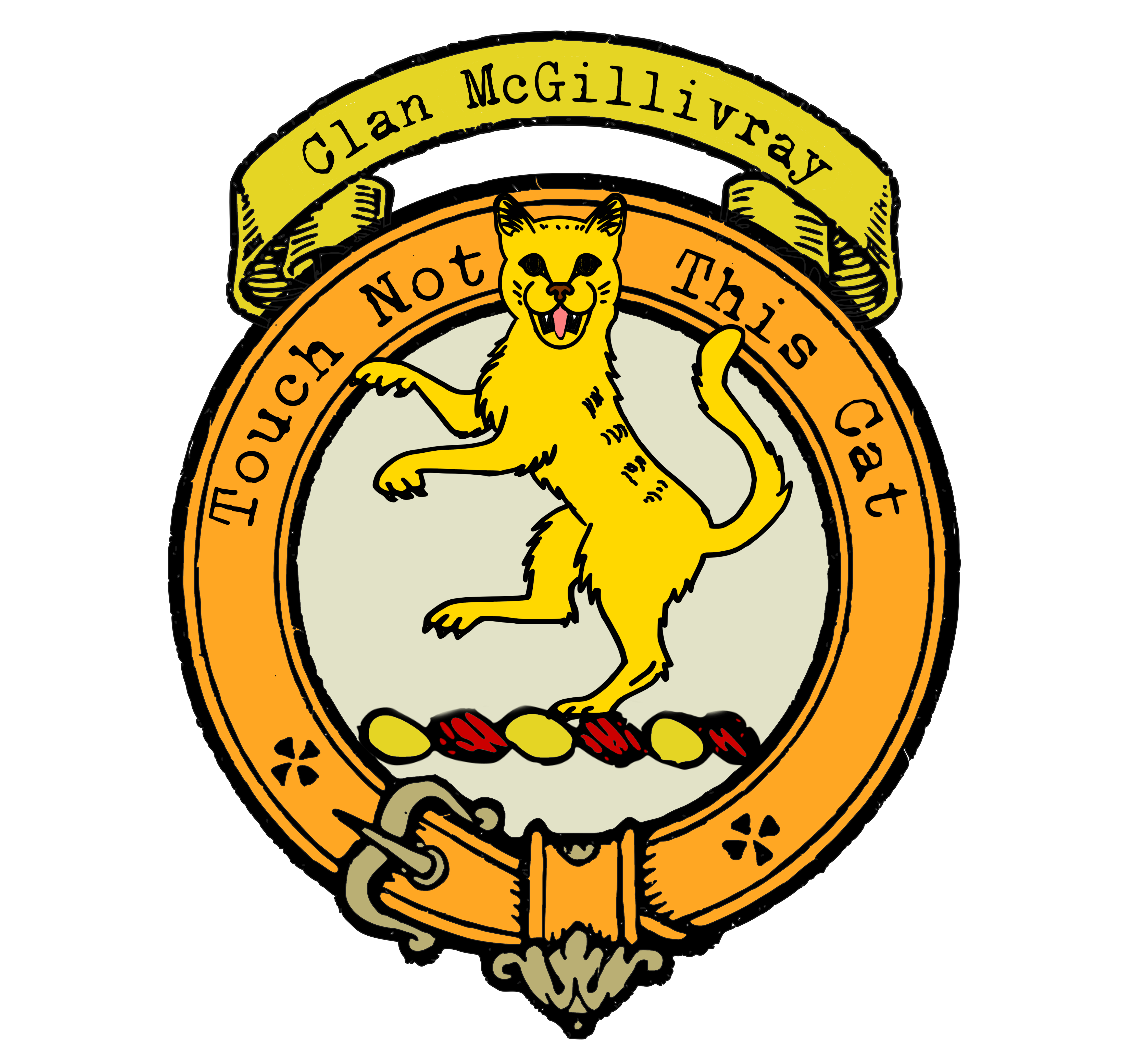Clan McGillivray Crest
 |
CREST: A cat-a-mountain as afore blazoned for the first quarter of the field MOTTO: Touch not this cat TRANSLATION: N/A VARIATIONS: MacGillivray |
| Long before King Somerled expelled the Norsemen from the western isles in the 12th century, the McGillivrays already held prominence in the region. Their roots extend deep into the annals of Highland history. With the advent of King Alexander II’s rule and the subjugation of Argyll in 1222, the Clann Mhic Gillebrath, as they were known, faced dispersion.
Legend has it that the progenitor of the MacGillivray clan, Gillivray, sought refuge under the protection of the chiefs of Clan Macintosh after their dispersion. This alliance led to the McGillivrays becoming part of the esteemed Clan Chattan Confederation. Their inclusion in this powerful confederation would shape the destiny of the MacGillivray clan in the centuries to come. |
|
 |
|
| Purchase @ Redbubble Purchase @ Amazon.com Purchase @ Amazon.co.uk |
|
| In the centuries before surnames became widespread in the Highlands, the McGillivrays, like many other clans, utilized patronymics and territorial designations to denote their lineage and affiliation. This practice ensured a sense of belonging and strengthened the bonds within the clan.The first accurate recording of the MacGillivray clan dates back to 1549, when their presence is noted in Dunmaglas. This documentation signifies the growing prominence of the clan during a time when the power dynamics of Scotland were in constant flux.
The McGillivrays were unwavering in their loyalty to their beliefs and alliances. Known for their support of an episcopacy in the church, they faced persecution at the hands of their Calvinist and Presbyterian neighbors. However, this did not deter them from upholding their faith and traditions. During the tumultuous period of Jacobite uprisings, the McGillivrays firmly stood by the cause of the exiled Stuart dynasty. They fought valiantly in both the Fifteen and the Forty-five, events that forever etched their name in the annals of Scottish history. At the decisive Battle of Culloden, Alexander Macgillivrays led his men, fighting alongside other Clan Chattan members, only to meet a tragic end. Following the devastating defeat at Culloden, many McGillivrays chose to seek a new life across the Atlantic. Their tenacity, independence, and entrepreneurial spirit allowed them to prosper, particularly as traders. One notable figure, William MacGillivray, rose to prominence as the head of the Canadian Northwest Company and a member of the Legislative Council of Lower Canada. Although the McGillivray estates in Dunmaglas were sold off in 1890, and the last known chief is believed to have passed away in Canada, the McGillivrays have experienced a resurgence in recent times. Clan societies have formed across the globe, providing a platform for MacGillivray descendants to reconnect, preserve their heritage, and honor their shared legacy. |
|
Citations:
|
|
